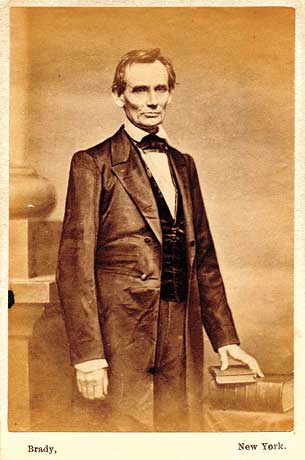
(4 of 4)
Lincoln's argument was a sort of primitive foreshadowing of today's Troubled Asset Relief Program, or TARP. While Democrats all the way up to President Andrew Jackson were demonizing the banks, Lincoln maintained that the way to save the system was to pump more money into it. He was convinced that once confidence was restored and commerce began humming again, the public works — roads, canal routes, widened rivers and rail lines — that seemed so expensive during the slump would repay their cost many times over. In his folksy way, he compared a stalled economy to a steam engine and thus summed up the idea we now call stimulus. At the engine's "dead point," Lincoln said, even a single turn is "extremely difficult." But jolt it back to life, and it quickly regains momentum. Then "all will be well again."
He wasn't entirely successful, and in the short term, Lincoln's vision saddled Illinois with a heavy public debt. But he carried lessons from that experience into his far more famous fights against slavery and for the Union. Lincoln's presidency worked an unprecedented economic transformation on the country. For the first time, the Federal Government taxed income, floated bonds on a large scale and issued paper currency. The national wealth — land — was leveraged to promote sweeping social, educational and technological initiatives. Some ideas didn't work as planned, like the Homestead Act. Others, like the Morrill Act to create land-grant colleges, worked brilliantly. Still others achieved their aims only at a cost of waste and graft, like the Transcontinental Railroad.
But all shared Lincoln's characteristic stamp of creative finance, large ambition and spirit of economic advancement. "I published my book at a time of great pessimism about America," explains Boritt. "I wanted to remind people of Lincoln's strong ideas about America and the right to rise." He continues, "Now the country is in another difficult period, and I believe the optimistic ideas Lincoln put forth can once again be central."
Lincoln exhorts us to take risks. Bet on America. But never lose sight of the goal: economic freedom for individuals — the right to rise and prosper. To the extent that President Obama's controversial stimulus plan advances that cause, Lincoln would say it is priceless. But only to that extent.
Of all the places where Lincoln lived, only one remains essentially as he knew it. It is the home he made with his wife Mary in Springfield, Ill. The handsome clapboard two-story at the corner of Eighth and Jackson exudes middle-class comfort: carved and upholstered furniture, woven carpets, colorful wallpaper and sumptuous drapes. I toured it recently on one of the coldest mornings of the year and couldn't help noticing that nearly every room was equipped with a radiating stove — state-of-the-art energy efficiency circa 1860. When the tour concluded in the kitchen, my National Park Service guide, Mike McPeak, noted that this one room was about the same size as the entire cabin in which Lincoln was born.
It's vain to scoff at such progress as being merely material. Lincoln's journey from a frigid hovel to a toasty double parlor was a personal declaration of independence, his emancipation from poverty's dead end. The house in Springfield is a reminder that by the time he left for Washington to save his country, Abraham Lincoln had fully escaped the prison of his birth. He was a free man, possessed of a mission to free others.